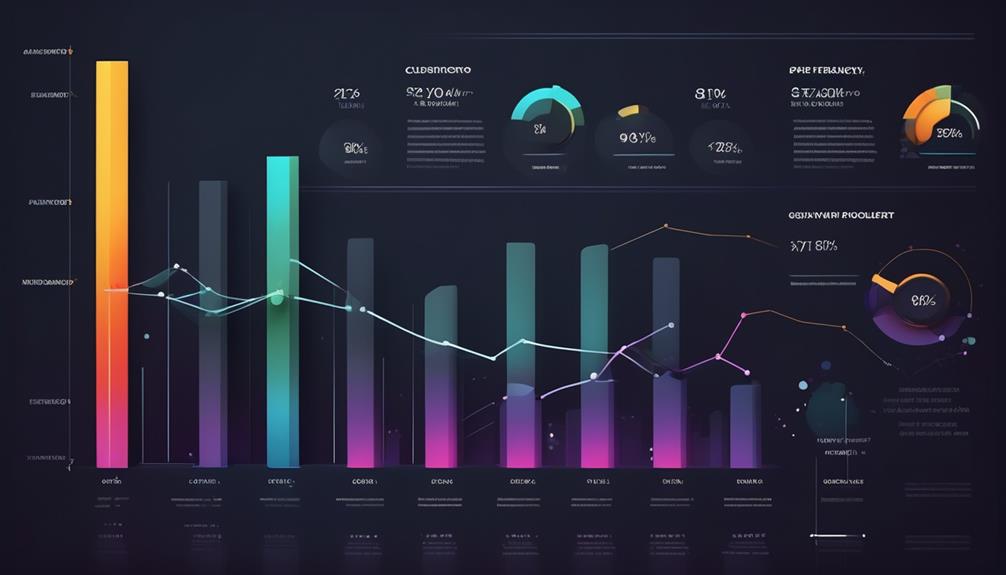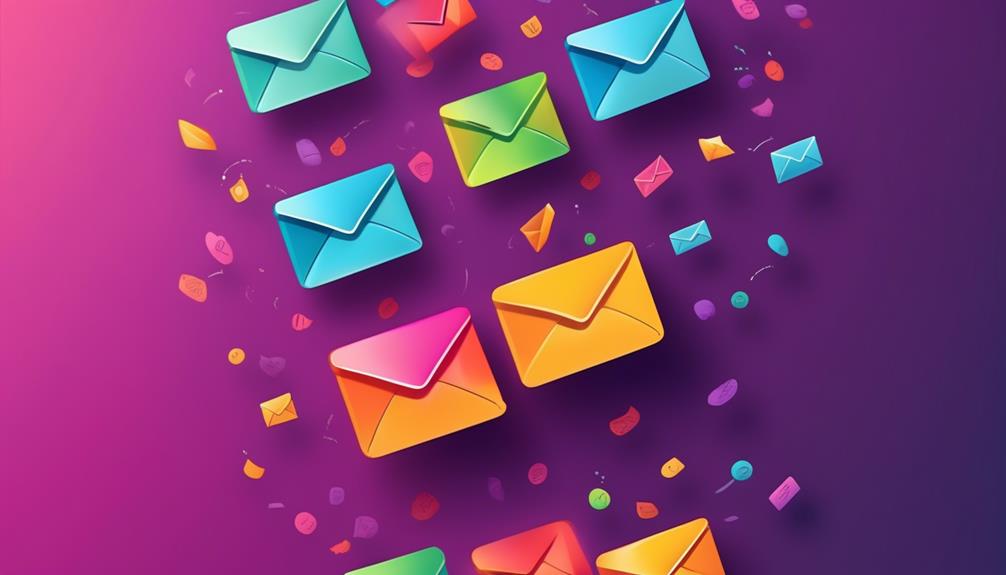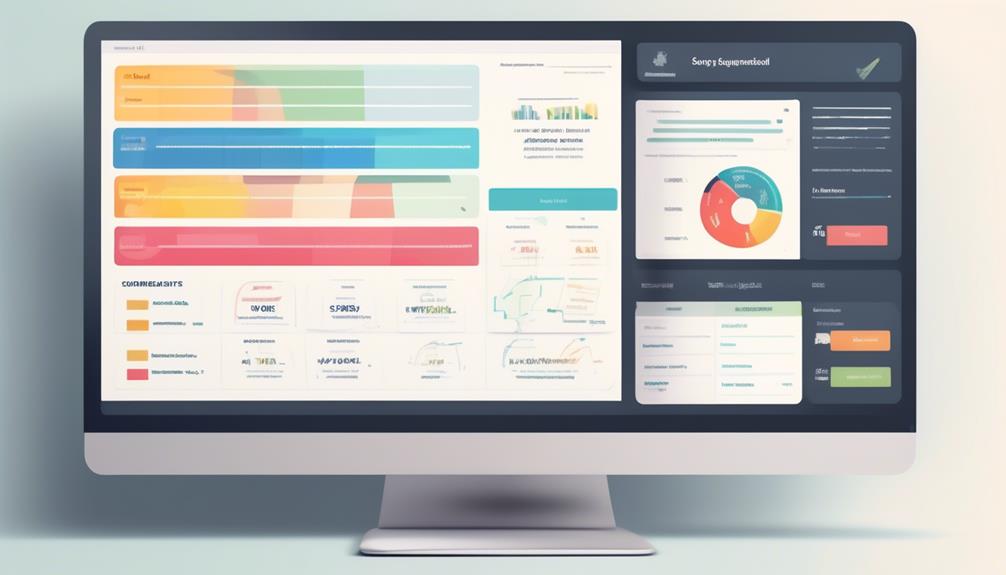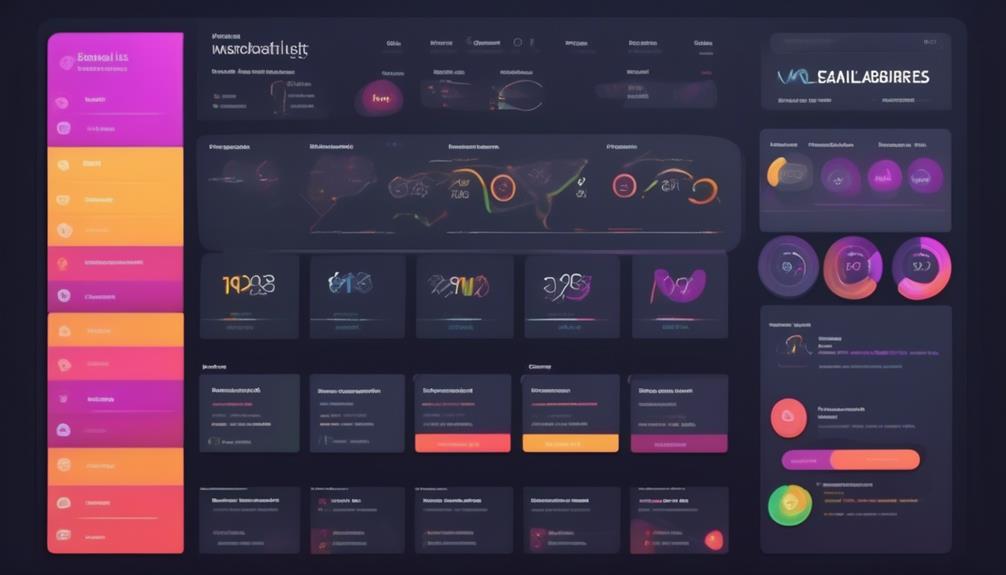In the world of email marketing, think of your email list as a treasure map, with effective segmentation being the key to unlocking its full potential. As marketers, we are always looking for ways to enhance the impact of our email campaigns, and segmenting our email list is a powerful strategy we can use.
But what are the five key strategies for effective email list segmentation that can truly elevate our marketing efforts and deliver tangible results?
Let's explore the nuanced art of segmenting our email lists to create tailored content that resonates with our audience and drives engagement.
Key Takeaways
- Demographic segmentation allows for targeted marketing campaigns tailored to specific segments based on personal characteristics like age, gender, location, job title, or organization type.
- Behavioral data analysis helps identify patterns and trends in customer behavior, allowing for more effective targeting and higher engagement and conversions.
- Purchase history segmentation enables tailored product recommendations and personalized offers based on customers' buying behavior, increasing the likelihood of conversion and fostering stronger customer relationships.
- Engagement level segmentation allows for categorizing subscribers based on their level of interaction with emails, allowing for targeted content and offers based on subscribers' level of interest and interaction, improving overall email marketing effectiveness.
Demographic Segmentation
In demographic segmentation, we categorize email recipients based on personal characteristics such as age, gender, location, job title, or organization type. This method of segmentation allows us to create targeted marketing campaigns and tailor content to specific segments based on their demographic information.
By leveraging customer data, we can effectively segment our email list and send personalized messages that resonate with different segments of our audience. For example, we can customize emails based on gender, offering products or services that align with the preferences of each group. Location-specific promotions can also be tailored to suit the interests of recipients in different geographical areas.
Furthermore, demographic segmentation enables us to provide industry-specific content, addressing the unique needs of customers based on their job titles or organization types.
Behavioral Data Analysis

Analyzing customer behavior allows us to tailor our email campaigns for higher engagement and conversions.
- Identifying Patterns: By conducting behavioral data analysis, we can identify patterns and trends in customer behavior, enabling us to create more targeted and personalized email campaigns.
- Creating Segments: Behavioral data analysis helps in segmenting the email lists based on how users interact with our emails, allowing us to create segments for more effective targeting.
- Sending Targeted Emails: Utilizing the information gathered from behavioral data analysis, we can send targeted emails with tailored content, offers, and messaging to specific segments, resulting in higher engagement and conversions.
Segmentation is the practice of dividing your email list into smaller, more targeted segments based on customer behavior. This segmentation strategy allows for the delivery of more relevant content to the right audience, ultimately leading to improved campaign performance.
Purchase History Segmentation
Segmenting our email list based on customers' purchase history allows for tailored product recommendations and personalized offers, enhancing engagement and driving sales. By analyzing the purchase history, we can divide our email list into segments based on customers' buying behavior. This enables us to target each segment with relevant content and offers, increasing the likelihood of conversion. Utilizing purchase history segmentation helps in delivering tailored content to the right audience, ensuring that our email recipients receive personalized recommendations for products or services they are likely to be interested in. This not only enhances the effectiveness of our email marketing campaigns but also fosters a stronger customer relationship.
| Segment | Description | Approach |
|---|---|---|
| High Spenders | Customers with significant | Recommend premium products or |
| purchase history | exclusive offers | |
| Repeat Buyers | Customers who make frequent | Provide loyalty rewards or |
| purchases | personalized product suggestions | |
| Inactive | Customers with no recent | Re-engage with targeted promotions |
| purchase history | and reminders | |
| Niche Buyers | Customers with specific | Offer related products or |
| purchase patterns | specialized content |
Segmenting based on purchase history enables us to deliver more personalized and targeted content, driving better engagement and increased sales.
Engagement Level Segmentation

Utilizing the insights gained from purchase history segmentation, we can now shift our focus to the strategic approach of Engagement Level Segmentation in order to further enhance the effectiveness of our email marketing campaigns.
Engagement Level Segmentation involves categorizing subscribers based on their level of interaction with your emails. This segmentation allows you to target highly engaged subscribers with different content or offers than less engaged ones. It helps in tailoring email frequency and content based on subscribers' level of interest and interaction.
By segmenting based on engagement level, you can re-engage inactive subscribers and nurture the relationship with highly engaged ones. This can lead to improved open rates, click-through rates, and overall email marketing effectiveness.
- Tailor content based on engagement level
- Re-engage inactive subscribers
- Improve open and click-through rates
Automation and Measurement
When designing our email marketing campaigns, it is crucial to implement automated processes and robust measurement tools to maximize efficiency and track performance accurately. Automation allows us to send targeted content to different segments of our email list without manual intervention, saving time and ensuring that the right information reaches the right audience. By leveraging a marketing platform's automation capabilities, we can set up triggers based on user behavior or demographics to send relevant content to our subscribers. This not only enhances the effectiveness of our email campaigns but also increases engagement and conversion rates.
| Automation | Benefits | Measurement |
|---|---|---|
| Saves time | Delivers relevant content | Tracks open rates |
| Ensures consistency | Increases engagement | Monitors click-through rates |
| Personalizes content | Boosts conversion rates | Analyzes subscriber behavior |
| Reduces errors | Improves customer satisfaction | Measures overall campaign performance |
| Streamlines processes | Enhances brand loyalty | Provides insights for optimization |
Frequently Asked Questions
What Strategies Were Employed to Segment the Email List Effectively?
We employed a combination of demographic and behavioral data for effective email list segmentation. This included factors such as:
- Age
- Gender
- Location
- Job title
- Organization type
- Past purchases
- Site interactions
- Wishlists
- Interests
Segmentation was also based on:
- Past purchases
- Location data
- Engagement levels
We integrated automated email segmentation using software with features, rules, triggers, and dynamic content. Personalized subject lines, compelling calls to action, and urgency tactics were utilized to boost engagement and conversion rates.
How Should I Segment My Email Lists?
When segmenting our email lists, we focus on tailoring content to specific audience interests and behaviors. By dividing our lists into meaningful groups, we deliver more relevant and personalized messages.
This involves analyzing data to understand what drives engagement and conversions. We also consider factors like demographics, past interactions, and purchase history.
This approach helps us achieve better open rates, click-through rates, and ultimately, improved campaign performance.
What Is Segmentation Strategy in Email Marketing?
Segmentation strategy in email marketing is the process of dividing recipients into smaller, targeted groups based on behavioral or demographic data. This allows for more personalized and relevant content, leading to increased open and click-through rates, conversion rates, and ROI, while reducing unsubscribers.
Effective segmentation methods include using demographic and behavioral data, past purchases, engagement level, and preferences. By analyzing and segmenting the email list, we can create targeted content and test its effectiveness.
How Can I Improve My Email Segmentation?
We can improve email segmentation by analyzing customer behavior, demographics, and engagement data. This enables us to create targeted campaigns that resonate with specific segments.
By delivering personalized content, we can boost open and click-through rates, driving better conversion and engagement. It's like tailoring a suit – the better the fit, the more impact it has.
This approach ensures our emails are relevant and valuable to each recipient.
What Are Some Key Strategies for Effective Email List Segmentation?
When it comes to boosting engagement and conversions, implementing effective email list segmentation strategies is crucial. By dividing your email list based on factors like demographics, purchase history, and behavior, you can cater to the specific interests and needs of your subscribers, leading to more personalized and targeted campaigns.
Conclusion
In conclusion, email list segmentation is a powerful tool for boosting the success of your email marketing campaigns.
Did you know that segmented email campaigns can increase revenue by up to 760%?
By utilizing strategies such as demographic segmentation, behavioral data analysis, purchase history segmentation, engagement level segmentation, and automation, you can create personalized and relevant content that resonates with your audience.
This, in turn, leads to higher open rates, click-through rates, and ROI.
Don't overlook the power of email list segmentation in your marketing strategy!










